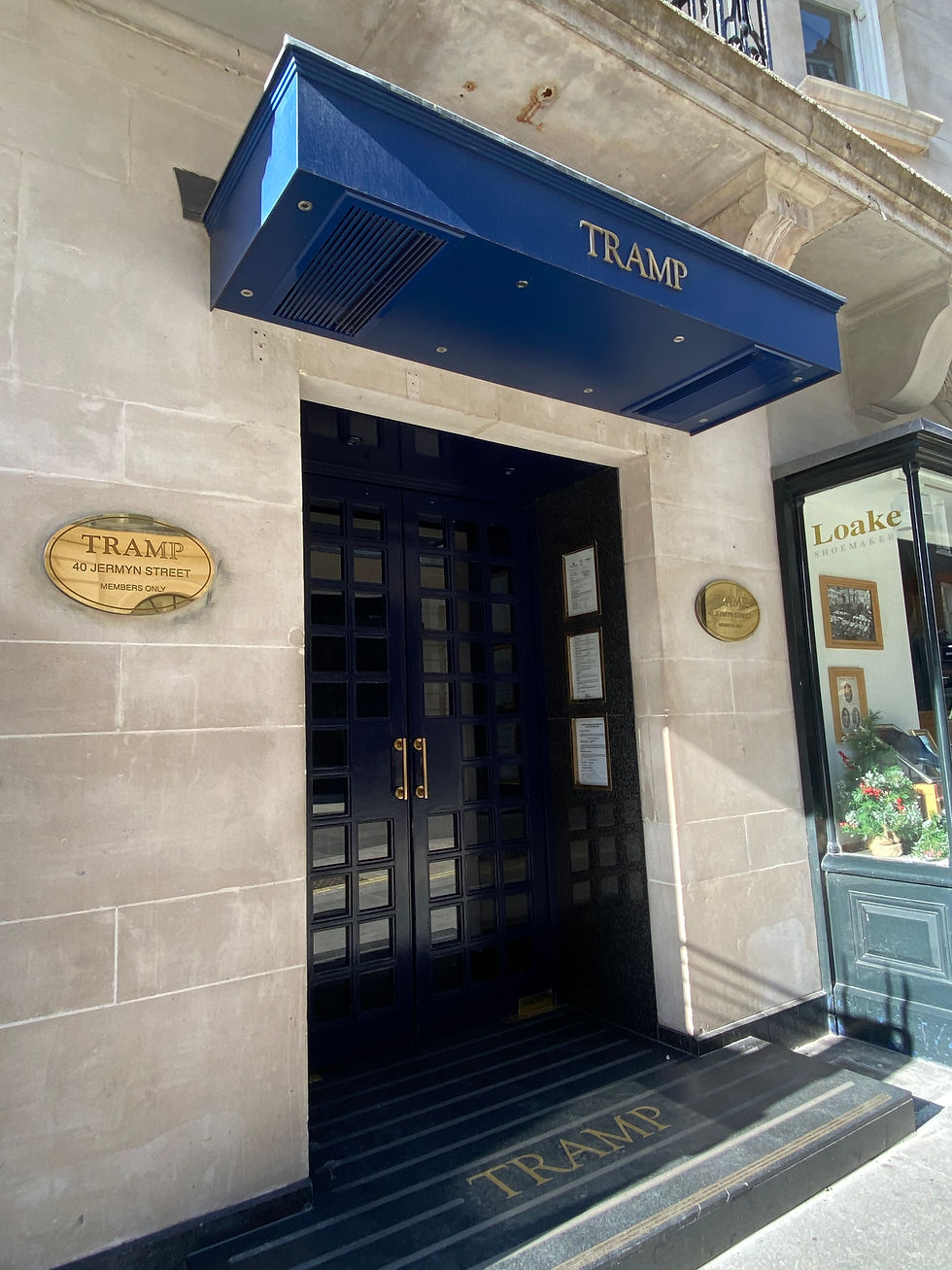The Street That Gave Birth to Beatlemania
- Rock Tour London

- May 29, 2022
- 4 min read

In the heart of London's Soho there's a famous department store called Liberty that's housed in a beautiful Tudor building. Just across Great Marlborough Street from Liberty's entrance is Argyll Street. This tiny little street, just a bit wider than an alley really, is home to The London Palladium at No. 8. (photo credit: ©rocktourlondon)

This theater was opened in 1910 and in its early days was an entertainment venue that hosted promenade concerts and pantomimes. In addition to its revolving stage, it also had its own telephone system so patrons in the boxes could call each other.
Fast forward to the fall of 1963 when the then managing director of the theater, Val Parnell, was hosting a weekly variety show called, Val Parnell's Sunday Night At The London Palladium. It was so popular it had a weekly viewing audience of an estimated 18 million.
(photo credit: ©rocktourlondon)
At this point The Beatles had performed on several pop shows but all of those were geared to the teenage viewer. Val Parnell's Sunday Night At London The Palladium appearance would be the group's first 'family show.' While no film of this performance exists anymore, (management of the TV portion didn't feel anyone would be interested in ever seeing it again) footage of The Beatles' attempt at leaving that show does exist.

No one is really sure if the decision to exit via the front door of the building, as opposed to the stage door around the corner, was deliberate or just not fully thought through but what ensued bordered on bedlam.
Ringo was the first Beatle to emerge (hence my theory on the not thought through option) followed by the other three. The small street was packed with screaming fans. The band quickly realized there was no car waiting for them so they hurried over to what they believed to be a taxi. It wasn't. It was a police car and the officers inside refused to allow The Beatles inside. (photo credit: ©rocktourlondon)
Even though The Beatles appearances were regularly surrounded by hoards of screaming fans the press, to this point, hadn't really written much about the band. This show at The London Palladium changed that. Not only were they now in nearly every paper in the UK, the term "Beatlemania" was coined and used to describe what greeted The Beatles wherever they went from then on.
Plenty of other acts performed on Parnell's Sunday night show; Cliff Richard and the Shadows, Petula Clark, even The Rolling Stones, but none of those acts had a "mania" term named after them. The Beatles appeared two more times at The London Palladium; in January of 1964 (which resulted in even more crazed fans out front) and in July of 1964 for a charity concert billed as The Night Of A Hundred Stars.
Directly next door at No. 5 Argyll Street is Sutherland House and was once the home to NEMS Enterprises, the company owned and run by Beatles manager, Brian Epstein. Epstein had a love for the stage and even attended one of London's top drama schools, so it wasn't an accident he chose offices adjacent to a theater. (He also leased another theater on Shaftesbury Avenue but that's a story for another blog post.)

Epstein moved his offices to Sutherland House in March of 1964 and quickly realized the disadvantage of being on a small street in the middle of London's biggest tourist area. It was hard to get clients in the front door without being mobbed. He not only managed The Fab Four but also Cilla Black, Gerry and the Pacemakers and Billy J. Kramer and The Dakotas, to name a few. Brian was also very strict with his staff for this reason. In a letter sent to his employees, welcoming them to the new offices, he stressed how important it was to treat everyone with courtesy since they would all be front and center in the public. eye. He also laid down the law against any staff member to ever divulge to anyone outside the company any information whatsoever about the business and daily dealings, especially the press. (photo credit: ©rocktourlondon)
The Beatles visited and gave many interviews from this location as well. Two of the more popular instances were when George and Pattie came for a press interview about their recent marriage in January of 1966. Another interview, (well, two actually) happened that year too. In March of 1966 journalist Maureen Cleave accompanied John Lennon to Sutherland House on the train from his house in Weybridge. During that journey conversation turned to John's thoughts on religion and her subsequent article quoted him as saying "We are more popular than Jesus now." That comment didn't have much of an impact in the UK but months later when a US magazine printed that quote out of context on their cover, radio stations in southern states began banning Beatles records and staged events to burn anything Beatles. The group was due to tour the United States in a few weeks time and it was here Lennon gave an interview explaining the comments he'd made in the context in which they were made. It was contemplated if they should cancel that tour but it seemed John's interview calmed the waters. The tour went on a planned but turned out to be The Beatles last tour.

In 2014 a blue plaque was unveiled to commemorate the history of the location.
(photo credit: ©rocktourlondon)
Our video tour, The Stories of Some Soho Places, takes you to Argyll Street. Click here to take a trip there and to some other Soho places and their rock and roll stories: https://videolibrary.rocktourlondon.com/programs/the-stories-of-some-soho-places-c17115?categoryId=95943 .
Join our community of rock and roll fans by adding your email address to our mailing list. (We promise not to oversend). Just click here: https://www.rocktourlondon.com/
Follow us on Facebook, Instagram and Pinterest too!
©RockTourLondon, 2022







Comments